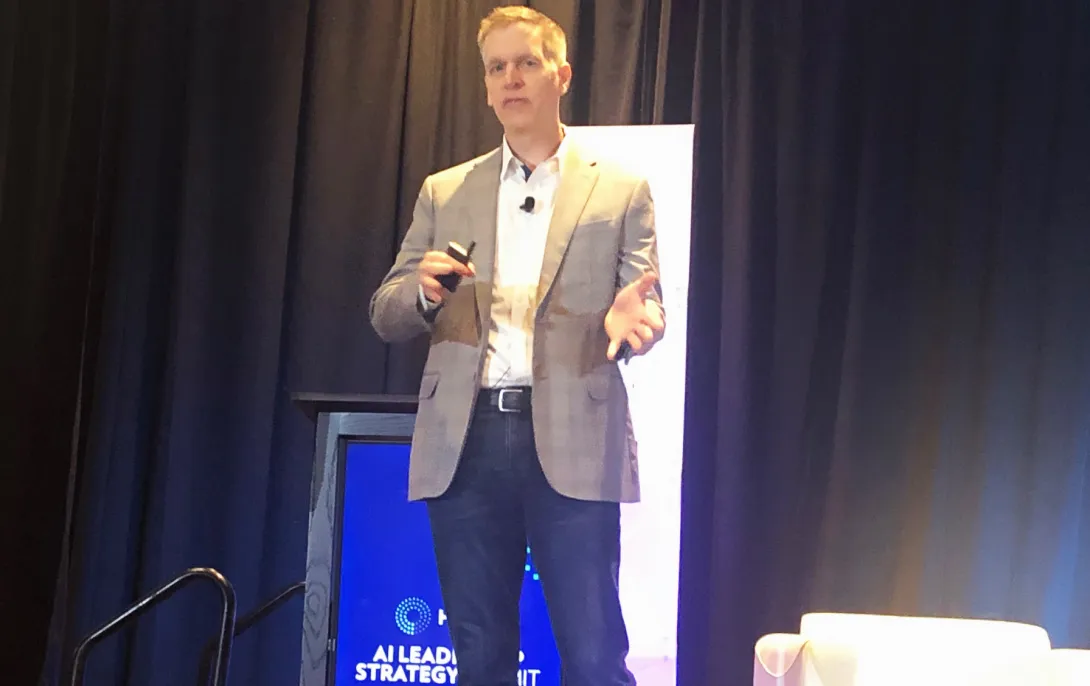
Photo: Blend Images - LWA/Dann Tardif/Getty Images
Valley Children's Hospital, located in California's Central Valley, just outside Fresno's city limits, serves 1.3 million children, most of whom live roughly between Sacramento and Los Angeles. For some time now, the health system has been improving its care delivery and gaining clinical and operational ROI with artificial intelligence.
Dr. Michael Scahill, medical director of physician informatics and digital health at Valley Children's, says the hospital is among the earliest adopters of ambient documentation technology in pediatrics, for instance.
And he tells Healthcare IT News that several other AI uses are improving pediatric care and patient outcomes at the hospital.
Not only can AI improve patient-doctor interactions and reduce physician burdens, he explains, but physicians at Valley Children's are using it to better personalize treatments with data analytics platforms, such as Epic Cosmos, that help doctors collaborate on rare disease cases and guide medication therapies based on patients' genomic data.
Pediatricians like personalization
A pediatrician by training, Scahill is not only the hospital's clinical decision-maker on questions of technology, he's also a halftime hospitalist in Valley Children's rehabilitation medicine service.
As a care provider, Scahill says he's especially bullish on ambient scribes. With AI listening in the background during patient appointments, doctors can turn away from their computers, free from the distraction of typing notes and improve their interactions with patients.
"It's very challenging for them to keep up with documentation, do their notes, order things while they're seeing the patient, and still maintain that interaction," he said.
A significant number of physicians have tested ambient technology and "absolutely love it," said Scahill. "Our CEO said the same thing."
Patients at Valley Children's, however, are benefiting the most.
"Nobody likes seeing a doctor whose back is to them while they're typing," Scahill explained.
Analytics improve diagnoses
Beyond improving patient experiences during visits, AI has improved how doctors diagnose and treat them.
Pediatric medicine has lagged behind other medical fields in adopting AI due to a lack of data and investment, Scahill explained.
With approximately 5% of hospitalizations in the United States involving children, there's less data available to train AI models, he noted. And because the pediatric market is "a 20th of the size of the adult market, there's not as much investment in coming up with products."
"It's a good thing/bad thing," Scahill said. While a largely healthy childhood population is good, if a child does have a debilitating illness, it challenges healthcare to come up with data sources that can develop effective pediatric AI to help find better answers, he explained.
Despite lower data availability slowing the technological advancement of clinical pediatric AI, Valley Children's is leveraging machine learning to improve the treatment and identification of rare diseases.
Using Epic Cosmos, which analyzes medical data across electronic health records nationwide, doctors have been able to identify colleagues with experience in treating rare diseases, such as phenylketonuria (PKU), and then discuss rare complications directly with them.
"Using this technology, we're able to identify not other patients per se, but other providers," he explained. "The patient data is confidential, of course, but we can find there's a doctor in North Carolina who sees a handful of patients with PKU, or there's someone in Minnesota who seems to see a lot of these patients. Let's reach out to them.
"It gives us an opportunity to collaborate in ways that were unheard of before," Scahill added.
He said Valley Children's is also using AI to guide medication therapy by analyzing a patient's genomic data.
In some cases, the AI can learn if one medication type will be more effective for a patient than another, and can also recommend the most effective dosage. Some patients may also have intolerances to certain medications.
"There's something like 6,000 medications in Lexicomp. It's a bewildering number of potential combinations, even for a genetic expert," he said. "It's hard to spot those, keep track of them and provide guidance for that."
Valley Children's is also building automation around genomic testing lab results.
"A lot of our patients do get whole genome sequencing these days. We're certainly one of the leaders in that," said Scahill.
With lab data going straight into an automation platform that alerts doctors prescribing medications, "We're able to say, 'For this particular patient, you should use a higher dose of this and a lower dose of this.' And that's really been a tremendous asset as well," he said.
AI enables access
While in its pilot stages, Valley Children's is also testing other ambient AI technology designed to help nurses with their documentation, such as vital signs, that could be live very soon, Scahill said.
The hospital is also working with Epic to improve how patient histories are taken. Instead of filling out forms, AI will take basic history questions.
"Patients walk into the room and instead of checking a bunch of boxes on children's developmental forms," he said. "We're extremely excited about that."
Recruiting physicians is also a challenge at Valley Children's and AI could help improve that, too.
"It's not like we're brimming with medical schools and academic medical centers," Scahill explained. "I went to Stanford and [University of California San Francisco] for training, and it feels like you bump into a doctor on every street corner."
It's not that way in the communities he serves, but improving patient access is still his number one goal, he said.
"I think those kids deserve the same care that kids in Palo Alto get," said Scahill. "I think AI is one of many tools that we can use for that."
Andrea Fox is senior editor of Healthcare IT News.
Email: afox@himss.org
Healthcare IT News is a HIMSS Media publication.


